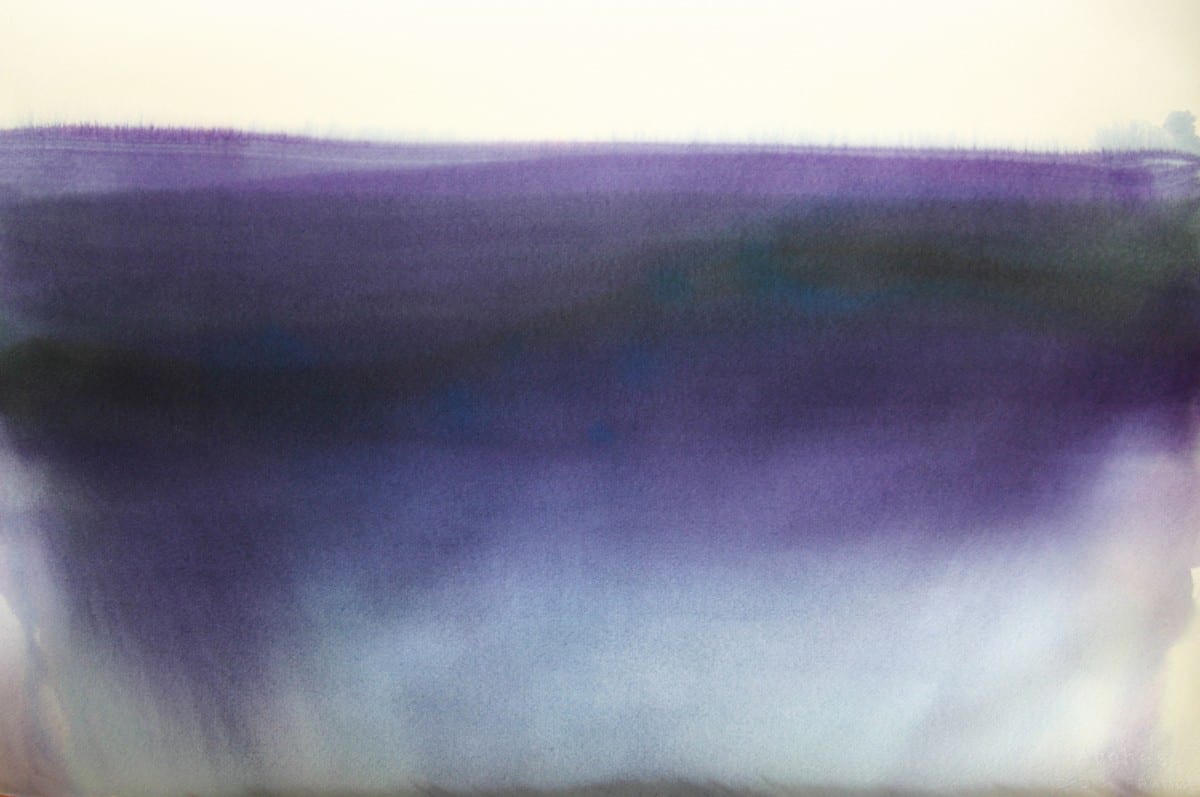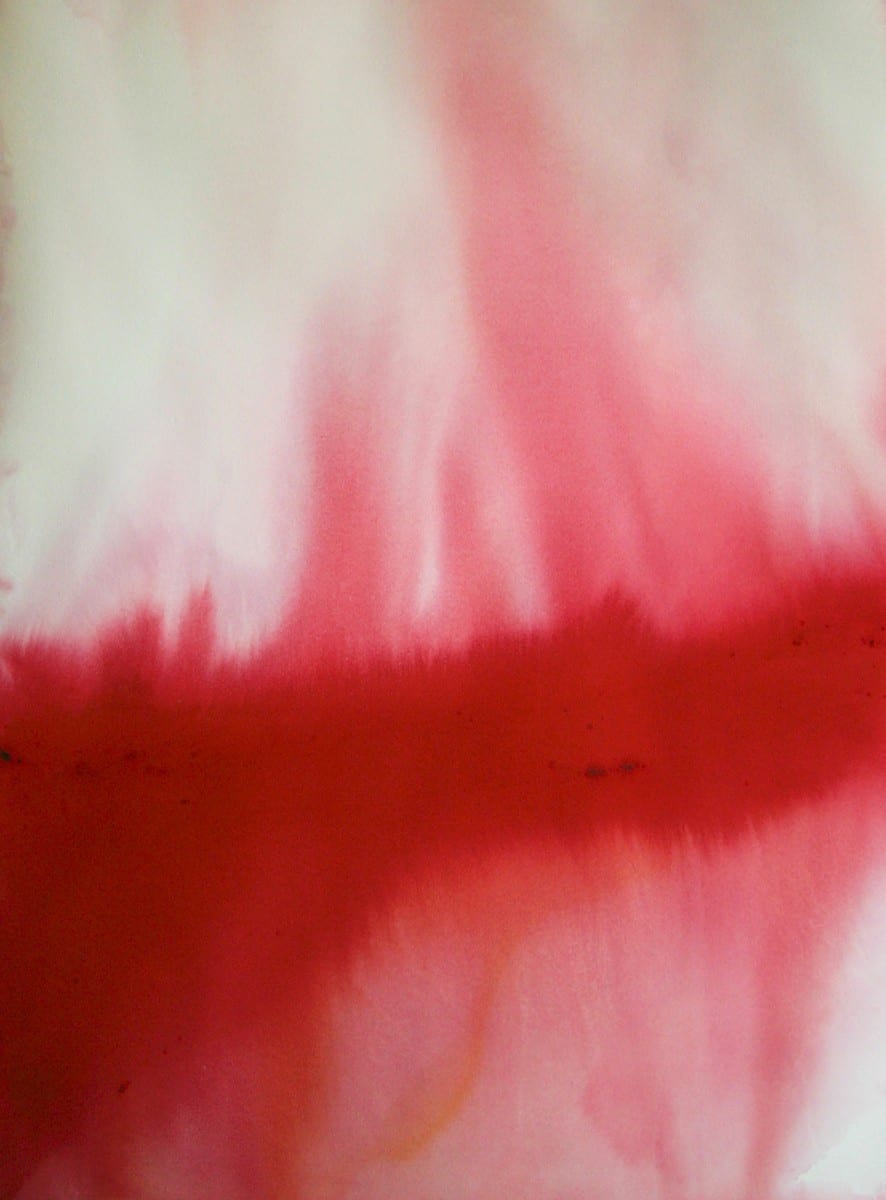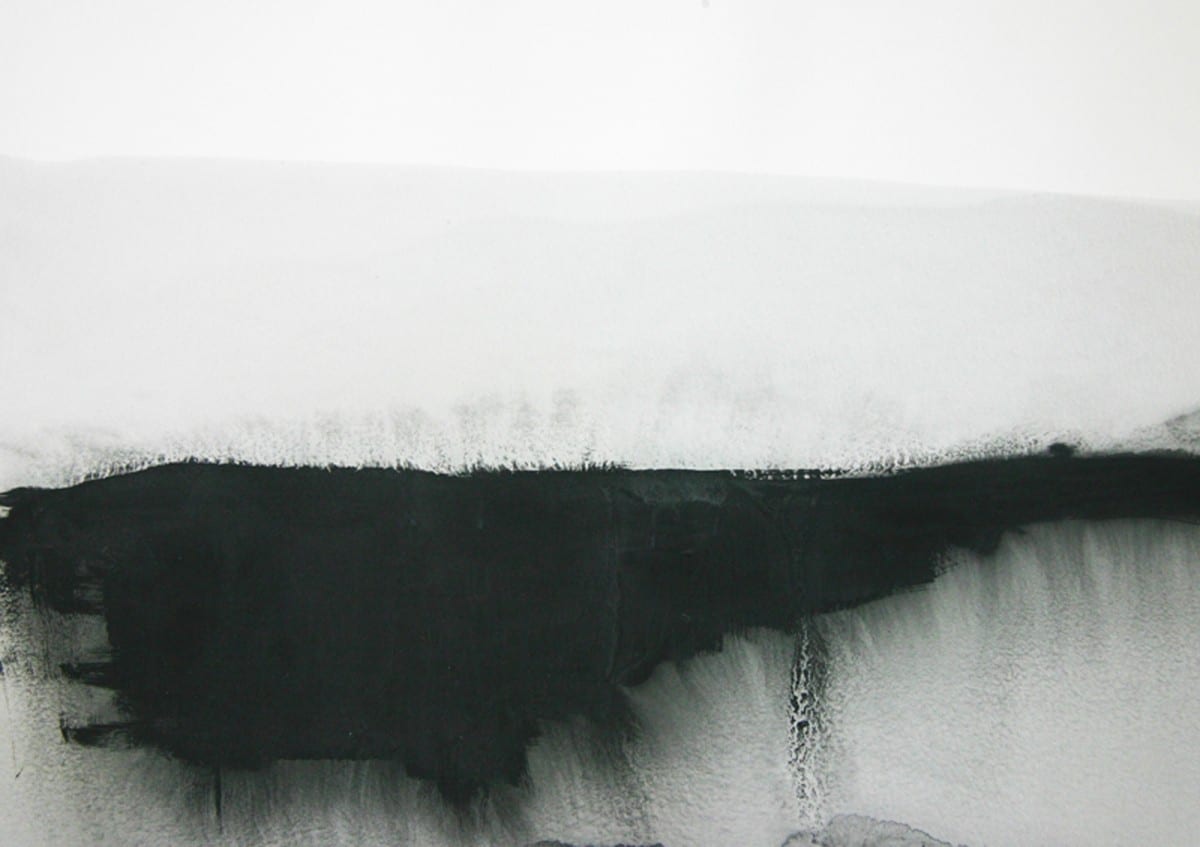The works in the Floodline series reflect Lisa Golightly’s challenge to handle the uncertain outcome of acrylic paint and fabric dye on paper.
The title Floodline has as much to do with the process and materials as it does to do with the subject. Experimenting with fabric dye on paper in a method that uses copious amounts of water, the workspace is essentially flooded at the end of the day. Lisa Golightly explains that she started the series of abstract works after struggling with acrylic figurative paintings.


Materials heavily influence the artist’s process. Using water and gravity to manipulate the movement of the dye, Golightly expresses that she is trying to “find the balance between control over the final product instead of allowing the process to dictate the direction of the piece.” Giving up some of the control is both difficult and freeing as the artist engages in an ongoing struggle with where to draw the line.

Featured Image: Lisa Golightly, Floodline Series No. 21, acrylic and fabric dye on paper, 6” x 6”

The “Floodline” works are like abstract landscapes, capturing an uncertain outcome in the studio.
this kind of reminds me of japanese ink paintings, where the amount of water used seriously affects what happens on the paper. does anyone else agree?
Absolutely! Ink wash painting, also known as literati painting is an East Asian type of brushpainting. Only black ink—the same as used in East Asian calligraphy—is used, in various concentrations. It was for centuries the most prestigious form of Chinese art, in theory mainly practiced in China by highly educated scholar gentlemen or literati, including some emperors, rather mere professional artists. In fact this was by no means always the case in China, and in Japan rarely so.